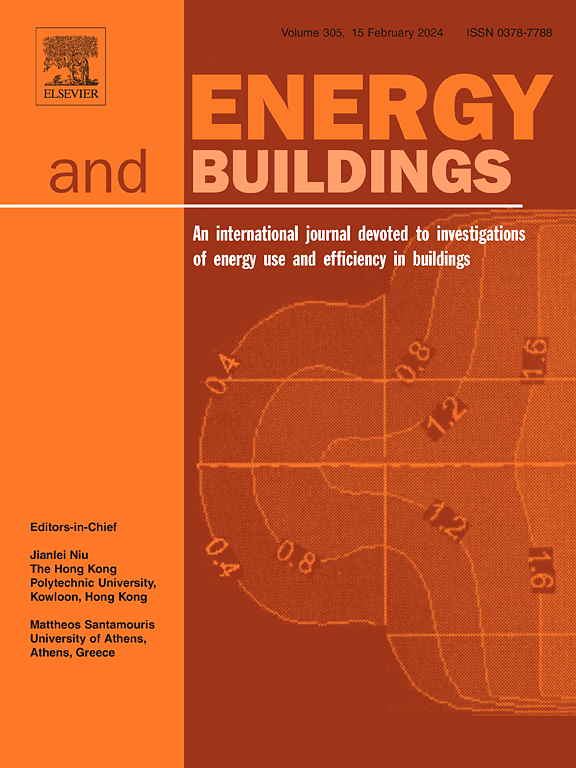Standardized scale development for fogg behavioral model towards energy-saving behavioral change in buildings
IF 6.6
2区 工程技术
Q1 CONSTRUCTION & BUILDING TECHNOLOGY
引用次数: 0
Abstract
In this study, a systematic procedure was proposed, according to an interdisciplinary perspective, to apply the Fogg Behavioral Model (FBM) to the field of energy-saving behavior change. On the basis of this procedure, a standardized scale was developed to assess the motivation and ability variables associated with energy-saving behaviors among building occupants within the FBM framework. First, the latent FBM variables were mapped onto the context of energy-saving behavior change. Then, an initial item pool was established by adopting human behavior-related classical theories and corresponding measurement items. Subsequently, data was collected to validate the initial item pool and conduct three studies: (1) study 1 refined unclear expressions through expert verification; (2) study 2 evaluated the item pool in a representative sample (high- and low-score groups) using a Critical-ratio test and explored the factorial structure of the item pool through exploratory factor analysis, and (3) study 3 confirmed the proposed structure using confirmatory factor analysis and examined convergent and discriminant validity. Ultimately, an 11-item version of the standardized scale was developed, which demonstrated high internal consistency and a good overall model fit. Evidence from discriminant and convergent validity analyses also confirmed its effectiveness as a comprehensive measurement tool. The proposed procedure, along with the developed standardized scale, facilitates the objective measurement of motivation and ability variables, thereby enhancing the practical application of FBM in the field of energy-saving behavioral change. Furthermore, researchers in other domains can adapt these variables to extend FBM’s applicability in driving behavioral change across diverse contexts.
面向建筑节能行为改变的雾行为模型的标准化规模开发
本研究从跨学科的角度,提出了将Fogg行为模型(FBM)应用于节能行为改变领域的系统流程。在此过程的基础上,开发了一个标准化的尺度来评估FBM框架内建筑居住者节能行为相关的动机和能力变量。首先,将潜在的FBM变量映射到节能行为变化的背景下。然后,采用与人类行为相关的经典理论和相应的测量项目,建立初始题库。随后,收集数据对初始题库进行验证,并进行三项研究:(1)研究1通过专家验证对不清晰表达进行细化;(2)研究2采用Critical-ratio检验对代表性样本(高、低分组)的题库进行评价,并通过探索性因子分析探讨题库的析因结构;(3)研究3采用验证性因子分析对提出的题库结构进行验证,并检验了收敛效度和判别效度。最终,我们开发了一个包含11个条目的标准化量表,该量表具有较高的内部一致性和良好的整体模型拟合性。判别和收敛效度分析的证据也证实了其作为综合测量工具的有效性。所提出的程序与已开发的标准化量表,便于对动机和能力变量进行客观测量,从而促进FBM在节能行为改变领域的实际应用。此外,其他领域的研究人员可以调整这些变量,以扩展FBM在不同背景下驱动行为改变的适用性。
本文章由计算机程序翻译,如有差异,请以英文原文为准。
求助全文
约1分钟内获得全文
求助全文
来源期刊

Energy and Buildings
工程技术-工程:土木
CiteScore
12.70
自引率
11.90%
发文量
863
审稿时长
38 days
期刊介绍:
An international journal devoted to investigations of energy use and efficiency in buildings
Energy and Buildings is an international journal publishing articles with explicit links to energy use in buildings. The aim is to present new research results, and new proven practice aimed at reducing the energy needs of a building and improving indoor environment quality.
 求助内容:
求助内容: 应助结果提醒方式:
应助结果提醒方式:


